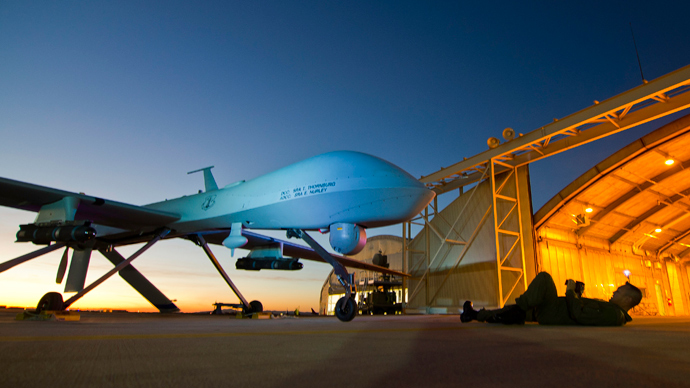Pakistan’s top officials have not only had knowledge of the US drone program that is now deeply unpopular in the country, but have quietly been authorizing it for years, according to a report based on classified documents and internal Pakistani memos.
The Washington Post published a report Wednesday describing a top-secret Central Intelligence Agency file which, using maps and aerial photos taken between 2008 and 2011, details dozens of drone attacks.
Specific notations on those documents indicate that much of the file was created by the CIA’s Counterterrorism Center and intended to inform Pakistani government officials of successful operations that killed suspected Al-Qaeda terrorists.
While Islamabad’s implied approval of the drone strikes has long been an open secret in Washington – in part because of the CIA’s ability to land predator drones on Pakistani military airstrips – the documents add new insight to the relationship. At least 65 attacks are outlined in the report, with a detailed drone timeline revealing that the initial list of Al-Qaeda targets quickly blossomed into a shadow war against anti-American militant groups.
At least 15 strikes took place between December 2007 and September 2008, with each of the attacks save for two targeting Al-Qaeda suspects. Twenty-three strikes have occurred in Pakistan in 2013 alone, the latest on September 29 when three men accused of being involved with the Haqqani network were killed. The most attacks in a single year came in 2010, with 117.
A spokesman for the CIA refused to provide the Post with any comment on the report but did admit the files appear to be genuine.
Also included is a short history of the contentious relations between American and Pakistani leaders that exist to this day.
Former Secretary of State Hillary Clinton, for example, once pressed her Pakistani counterpart to disclose the nature of the relationship between hostile militant networks and the Pakistani Inter-Services Intelligence agency. Clinton cited “cell phones and written material from dead bodies that point all fingers” at an insurgency group in Pakistan.
“The US had intelligence proving ISI was involved with these groups,” the cable noted.
Most of the dates and statistics included were similar to the numbers previously disclosed by human rights groups. The number of civilians who have been killed or wounded though were all listed as “zero” in the CIA report, while hundreds of innocent Pakistanis are known to have been killed as a result of the strikes.
Former CIA deputy director Michael J. Morell regularly delivered briefings regarding the drone program to Pakistan’s ambassador to the US, Husain Haqqani. Morell shared with Haqqani maps of drone operations, which included orange logos to denote the locations of the strikes and gruesome images of charred bodies. These images have never been publicly available.
The Post’s publication comes on the same day Pakistani Prime Minister Nawaz Sharif met with US President Obama and called on the White House to end the drone program.
Responding to an ongoing national outcry, the government of Pakistan has asserted that the drone program is a violation of international law. The issue has become a major point of contention, especially after a US Navy SEAL team killed Osama bin Laden in Pakistan without the government’s knowledge in 2011.
“I…brought up the issue of drones in our meeting, emphasizing the need for an end to such strikes,” Sharif told assembled media after speaking with Obama Wednesday.
“The use of drones is not only a violation of our territorial integrity but they are also detrimental to our efforts to eliminate terrorism from our country,” he said earlier.
His request is not likely to be honored in Washington given the importance the White House has placed on the drone program, although Obama said the two countries hope they can work out their remaining security discrepancies.
“We want to find ways for our countries to cooperate even as we have differences on some issues, and we want to make sure that the trajectory of this relationship is a positive one,” White House spokesman Jay Carney said Wednesday afternoon.

